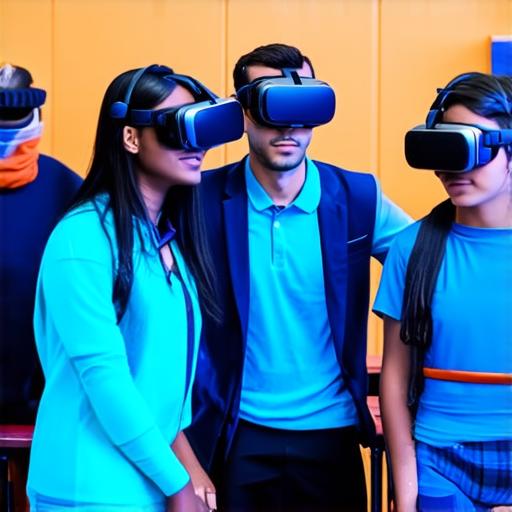In recent years, virtual reality (VR) technology has been rapidly gaining popularity in various industries, including education. VR has the potential to revolutionize the way students learn and interact with their academic environment, but there is a need for research to determine its impact on educational outcomes.
Introduction
Virtual reality technology has been around since the 1960s, but it is only in recent years that it has become accessible to a wider range of users. The development of VR headsets and more powerful computers has made it possible to create immersive and interactive learning experiences that were previously impossible.
The Potential Benefits of VR in Education
There are several potential benefits to using VR in education. Firstly, VR can provide an immersive learning experience that allows students to visualize complex concepts in a way that is not possible with traditional teaching methods. For example, VR simulations can be used to teach biology students about the human body by allowing them to explore and interact with virtual organs and systems.

Secondly, VR can create safe and controlled environments for students to practice skills and apply knowledge in a risk-free setting. For example, medical students can use VR simulations to practice surgical procedures without putting patients at risk. Similarly, engineering students can use VR simulations to test and refine their designs before building physical prototypes.
Thirdly, VR can enhance collaboration and communication among students by allowing them to interact with each other in virtual environments. For example, language learners can practice speaking with native speakers from around the world using VR language labs. Similarly, history students can explore ancient civilizations together using VR reconstructions of historical sites.
The Potential Challenges of VR in Education
While there are several potential benefits to using VR in education, there are also some challenges that must be addressed. Firstly, VR technology can be expensive, which may limit its accessibility to schools and students with limited budgets. Secondly, VR can be disorienting for some users, which may lead to motion sickness or other adverse effects.
Thirdly, there is a lack of research on the effectiveness of VR in education, which makes it difficult to determine its impact on student learning outcomes. While there are some promising studies, more research is needed to establish the long-term benefits and drawbacks of VR in education.
Case Studies of VR in Education
Despite the challenges, there are several case studies that demonstrate the potential of VR in education. One such study is the use of VR simulations in biology classes. In a study conducted by the University of Maryland, students who used VR simulations to learn about the human body showed significant improvements in their understanding of complex concepts compared to those who learned using traditional teaching methods.
Another example is the use of VR in engineering education. In a study conducted by Purdue University, engineering students who used VR simulations to test and refine their designs showed improved performance on standardized tests compared to those who used traditional testing methods.
Finally, there are several examples of VR being used in language learning. For example, the British Council has developed a VR language lab that allows learners to practice speaking with native speakers from around the world in a safe and controlled environment. Similarly, Duolingo has developed a VR language learning app that allows users to explore and interact with virtual environments in different languages.
Conclusion
Virtual reality technology has the potential to revolutionize education by providing immersive and interactive learning experiences that were previously impossible.
